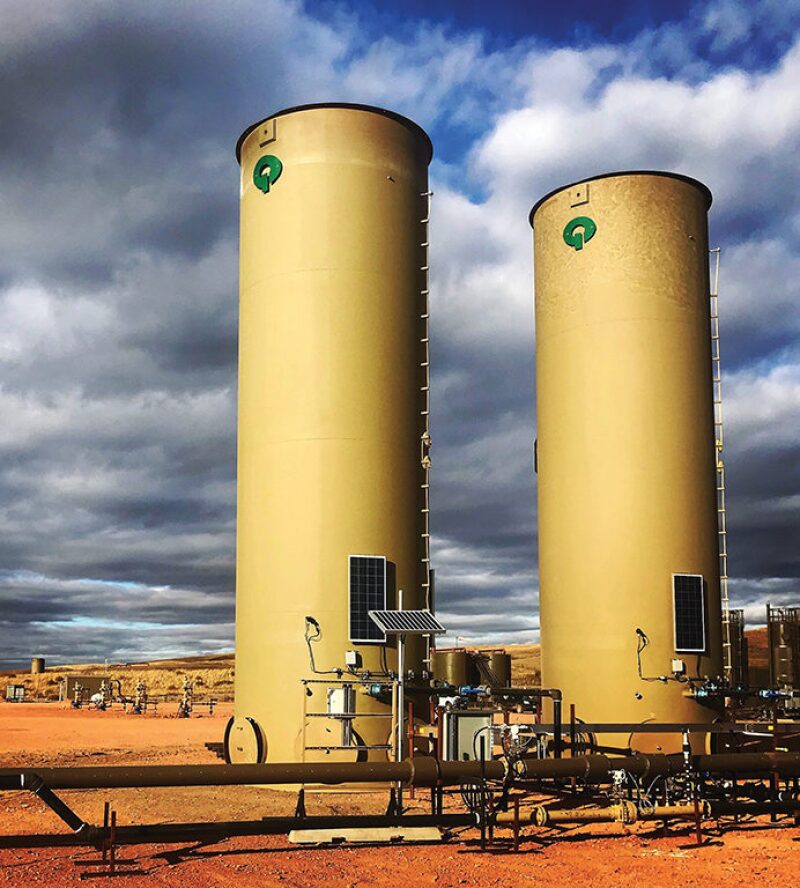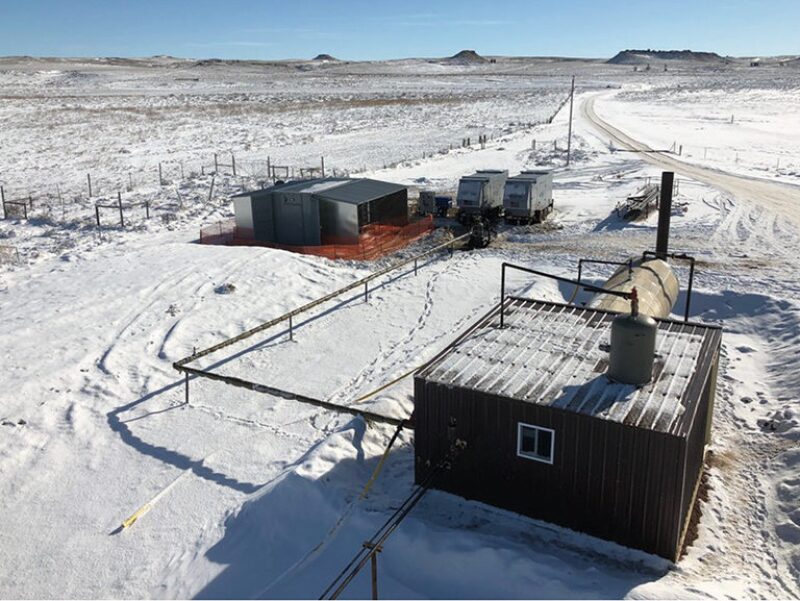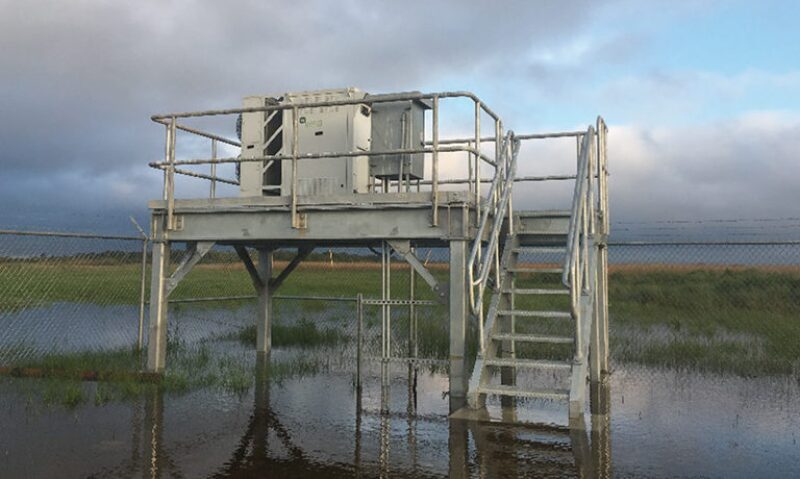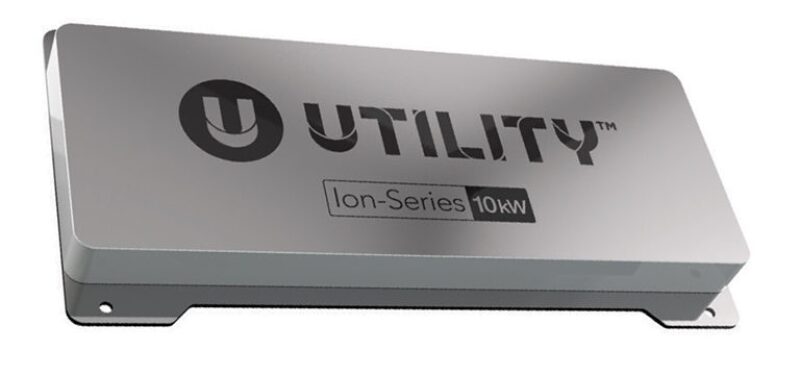The rising levels of routine flaring in the US have caught the eye of many, especially innovators who see a big opportunity to marry environmental action with good business sense. All these technology developers are united around the idea that routine flaring equates to burning billions of dollars a year.
But most shale producers, faced with low prices and chronic takeaway constraints, have had little incentive to invest in capturing associated gas.
However, the broad reach of North American shale developments has made the flaring of associated gas one of the sector’s most visible public relations problems, drawing ire from environmentalists and increased scrutiny from the media, regulators, and investors. There are now concerns that the “clean” reputation of natural gas may be lost if too much of it is burned up at the wellsite or, worse, vented straight into the atmosphere.
In an earnings calls last year, executives at Pioneer Natural Resources—the largest pure-play operator in the Permian Basin—told investors that the company flares the second-smallest percentage of associated gas among large explorers. Pioneer shared a chart showing that it burned less than 2% of its associated gas compared with a basin peer group average of 5%. Including this measurable in its earnings report was a first for Pioneer and suggests that flaring may be a differentiator going forward. This development was followed by Occidental Petroleum, another large Permian operator, which said in February that it would commit to zero routine flaring by 2030—becoming the first US-based producer to make such a commitment.
One way operators are cutting flaring is simply by not outstripping their takeaway capacity. Sometimes this means slowing well development or shutting in wells. The goal also can be reached by investing in technologies that put associated gas to a productive use, while allowing crude to flow from wellheads unabated.
The list of ideas includes mini-facility solutions such as small-scale gas-to-liquids (GTL), compressed natural gas (CNG) in a box, and portable LNG units, all of which make small quantities of associated gas able to be transported by truck. Another idea is using associated gas as feedstock for mini-power plants.
“I’ve been to the sites with black, smoky flares,” said Audrey Mascarenhas. “I would look at people pulling power off the grid and using fuel gas while wasting their own energy in a flare stack—that just didn’t make any sense to me.” So what did make sense? Incinerators.
Mascarenhas is an industry veteran and petroleum engineer who retired from Gulf Oil in 1999 only to immediately re-enter the industry as the chief executive officer of Questor Technology. She spent the next 20 years at the helm of the Calgary-based company trying to help oil companies kick the habit with a line of advanced incinerators called “clean combustion thermal oxidizers.”
In addition to removing volatile organic compounds (VOCs), methane, and other pollutants from associated gas, thus delivering cleaner emissions, the heat generated from the incineration can generate power to run a wellsite or even help evaporate produced water into a cheaper-to-dispose-of slurry.
Questor operates a fleet of more than 100 rental units and has sold more than 300 to energy companies around the world, from Mexico to Oman. The technology has also attracted US producers in the Bakken Shale, DJ Basin, and Marcellus Shale. With a couple of demonstration pilots recently completed, Questor’s next goal is to find clients in the Permian where operators flare more than 750 MMscf/D.
Other firms trying to stamp out flaring have been founded more recently than Questor and have far fewer installations. Some have a few. Some have one. Some have none. For flare mitigation to leave its nascent state of adoption, these companies must prove to the world that they can achieve a level of meaningful scale.
One technology running in this direction is blockchain, or more specifically, cryptocurrency mining. In December, Crusoe Energy Systems closed on $70 million in equity funding and project financing to build gas-powered, cloud-computing systems that can be used at wellsites to mine Bitcoin. The Denver-based startup is aiming to send 70 new units to the field this year, which at full capacity would prevent about 10 MMscf/D from being flared.
One challenge involves getting the gas. Tight-oil wells see increased gas-to-oil ratios over time, hence increased flaring in maturing plays. But since total gas output is declining over the life of the well, modular mining units need to be moved when volumes drop too low. Crusoe says its units are designed to operate from millions of scf/D to as little as 50,000 scf/D.
Another company working the Bitcoin angle is Blue Marble Gas. Blue Marble’s first project aimed at mitigating flaring will involve placing a power-generation and Bitcoin-mining system next to a gas pipeline. This approach intends to free up pipeline capacity, allow operators to allocate some supply to the midstream mining operation, and it provides a reliable source of gas to make the cryptocurrency.
Among the startups that are arguably working on longer horizons are two Utah-based firms focused on new energy-generation technologies.
Headquartered just north of Salt Lake City, Qnergy was formed in 2009 by a cryogenic cooling company to build Stirling engines that are now powering a handful of wellsites in the US. The company claims to be the first to use the more than 200-year-old engine technology and to make electricity affordable. Also in Utah, Utility Global is gearing up to release a fuel cell technology that seeks to make methane or CO2-powered fuel cells the most affordable option for electricity in the oil field.

A Better Way To Burn
Traditional incinerators have served as an alternative to gas flaring for flowback operations and when operating near populated areas. One of their advantages is the elimination of flames that can be seen miles away. They also tend to be simple systems: a burner on the bottom is used to ignite the gas, and the hot gas rising up draws in air.
“What we’re doing is different,” explained Mascarenhas. “We’re using the pressure of the associated gas to create a high-velocity vortex that, just like a tornado, actually sucks in air so that we create a homogenous mixture of waste gas and air.” That mixture swirls around for less than a second before burning up. All that remains in the exhaust stream is CO2 and water.
Flares and traditional incinerators are not always able to combust the hazardous VOCs that accompany methane out of an oil well. Questor reports that its technology has been independently verified by regulators as capable of removing 99.9% of VOCs, lowering the emission intensity of a wellsite while improving local air quality.
Questor’s incinerators have been installed by a handful of North American shale producers that were bumping up against state limits on emissions and flaring while facing pipeline constraints.
In Colorado, one producer was able to increase production from multiple wells by about 400 B/D by installing one of the rental units for $1,000 a day. In North Dakota, Whiting Petroleum used the incinerators on multiple pads, debottlenecking around 2,100 B/D.
In Mexico, the incinerators are being installed at more than a dozen wellsites where gas is not flared but vented. Venting is considered to have a far greater effect on the climate since methane can trap at least 25 times more heat than carbon dioxide in the upper atmosphere.
The thermal energy from the combusted gas is now being used to generate power, which means that the old diesel generators will be removed from the wellsites. The project total is around $8 million. For that, Pemex, the operator of the assets, will reduce its emissions at the sites by 450,000 tons per year for the next decade at a cost of less than $2 per ton compared with Mexico’s carbon tax of about $3.50.

Making Coin
Roger Muniz, a cofounder of Blue Marble, got the idea for his 2-year-old startup while working on construction projects in the Permian. “Every day, I drove past a ton of flares and one day it just dawned on me that there has got to be something that we can do with all that energy,” he said, echoing the familiar refrain of many of those trying to jump-start the flaring mitigation economy.
Blue Marble is part of small cadre of companies trying to convince oil and gas producers that the once-buzzy area of Bitcoin is a practical solution to the problem of flaring.
“Most people either one, don’t know about it, or two, don’t understand it and would rather not deal with it because of these two factors,” said Muniz of Bitcoin and blockchain, the underlying technology of cryptocurrency.
Blue Marble looked at other applications for its technology, including working in conjunction with small-scale GTL systems or providing the electricity for wellsite cloud computing. However, the firm decided to start with pipelines and Bitcoin because of the simplicity this pairing offers.
A drawback of wellsite systems is that production declines in shale wells are too steep to be used as a reliable source of gas, forcing the equipment to be moved from location to location. And aside from production declines, pad wells sometimes need to be shut in for workovers, which represents downtime for the cryptocurrency mining application.
For Blue Marble, this meant the better option was to install the system next to a pipeline. Muniz merged his startup with a midstream operator last year and shortly after signed its first deal with a private equity group that was willing to become its first customer.
The business plan is simple: use pipeline gas to generate electricity and sell that electricity to the owner of the Bitcoin-mining operation. In this case, Blue Marble gets paid for the energy conversion while its private equity backer holds onto the Bitcoin wallet.
All Bitcoin applications for flaring are attempting to take advantage of the arbitrage that exists between low natural gas prices and the cryptocurrency. Throughout last year, gas prices in the Permian spent most of the time below break-even prices with some days dipping into negative territory—a situation caused by oversupply that forces producers to pay for takeaway without the possibility of earning a return.
Blue Marble estimates that a single unit of gas used to make one Bitcoin—which today is valued at around $9,000—would bring a return of $8–15 at current commodity prices. The first installation taking shape this year is estimated to convert 30 MMscf/D into nearly $270,000. This will require at least 100 MW of power, generated by four GE‑built trailer-mounted gas turbines.
Blue Marble’s own innovations include new software to operate the units remotely, and how to package all the mining equipment with the right power systems. The company is also using an emerging cooling technology to regulate the temperature from the computers that are used to crunch the algorithm that delivers a Bitcoin.
As more people become educated about this area of digital technology, Muniz predicts oil and gas companies soon will see Bitcoin mining as a practical way to normalize revenue from otherwise stranded gas.

Electrifying Old Ideas for the Oil Field
Qnergy is trying to prove that the Stirling engine can compete as one of the world’s most reliable power-generation technologies. Understating the challenge of this proposal is difficult.
Engineers and innovators have been inspired by the machine since it was invented by Scottish clergyman Robert Stirling in 1816. The Stirling engine, an external combustion engine, is regarded as a simple system that brings with it extreme reliability—enough to persuade NASA to spend millions of dollars developing the technology for space exploration.
Stirling engines have been used in other areas, including cryogenic cooling, which is why Qnergy’s parent company is an industrial supplier of cryogenic coolers. However, no one has demonstrated that the technology can generate electricity commercially.
“There are two fundamental reasons for that,” said Ory Zik, the chief executive of Qnergy. “One is the mechanics; the only ‘working fluid’ that is efficient enough to use is helium. And to build a system that is sealed for helium is very, very difficult.”
The other factor holding back Stirling engines from the energy sector involves control systems—a technology sector that Zik’s home country of Israel happens to specialize in. “Low-cost power electronics have only been available in the last 15 years,” he said. “So we have actually combined innovation from Israel on power electronics with the mechanics that was developed here in Utah.”
With control systems solved for, Qnergy turned to laser welding to build pressure vessels that could contain the tiny molecules of helium. The result is a product that requires little to no maintenance for years and can generate up to 5 kW of electricity using any available heat source, including unprocessed field gas.
“We don’t need to do any cleaning,” said Zik. “We knock out the fluids, capture the water, and then we can use any type of fuel because the burning is external to the engine. That’s the beauty of it—you give me heat, and I give you power.”
Qnergy says it has installed a few hundred Stirling generators in the US, including at pipelines and on well pads to power ancillary systems such as SCADA, battery charging, lights, security systems, and energy-intensive glycol units. Other upstream projects include chemical injection and water treatment operations. Zik said one methane-supplied generator can be used to power a pad with up to 6 wells.
Zik added that the technology has found a home in some unlikely places. “We have installations, which are literally 20 ft from a power line, but the permitting takes too long,” he said, noting that the client operator in this case was able to supply the site quicker by connecting a generator to the field gas lines.
On pipelines and facilities, the Stirling engines are being used to generate compressed air to replace methane-powered pneumatic devices that rely on bleeding some gas to turn valves. “About 10% of the industry’s emissions comes from these type of devices,” Zik said.
Fuel cells are another not-so-new technology that is getting a fresh look. Also originating in the 1800s, fuel cells have gained interest in the past decade for their promise of cheap energy, but many of the commercial efforts have failed to achieve scale and profitability. Utility Global is betting it can reverse this perception.

The startup is developing solid-oxide-ion chips, or fuel cells, which can utilize several gases including both methane and CO2. The company’s value proposition is that its fuel cell technology is more efficient than what is available on the market today.
“We see huge cost-reduction potential once you have these chips that are 300 times smaller and 100 times cheaper,” said Matt Dawson, the chief executive officer of Utility Global, a spinoff from energy technology research firm Hall Labs.
Dawson explained that most solid-oxide fuel cell stacks cost more than $900/kW while the new fuel cell chips will generate electricity at a cost of less than $0.02/kWh.
These efficiency gains are partly the result of using electromagnetic sintering and an additive manufacturing, or 3D-printing, technique, to print and bond the components of the chips. This represents just one of 50 patent applications the company has filed in recent years.
The company sees a number of use cases for its technology in the oil field, including one that is moving into the pilot stage that will use the fuel cell chips to convert CO2-rich wells into “grid-scale storage batteries” by using the gas to chemically store excess electricity from the grid.
In an application more directly aimed at flare mitigation, Utility Global is working on a way to combine its fuel cell chips with catalyst chips to make small-scale GTL systems.
“It’s this portable little product that you basically plug in to your wellhead and convert your stranded gas into liquids at an early stage” in the well’s life, Dawson said, noting that the influx of gas that comes during the initial production phase of a tight-oil well is often vented or flared to meet line-pressure specs of field infrastructure. This way, “when you’re done after the first month or with flowback, then you just move the unit to the next well.”


